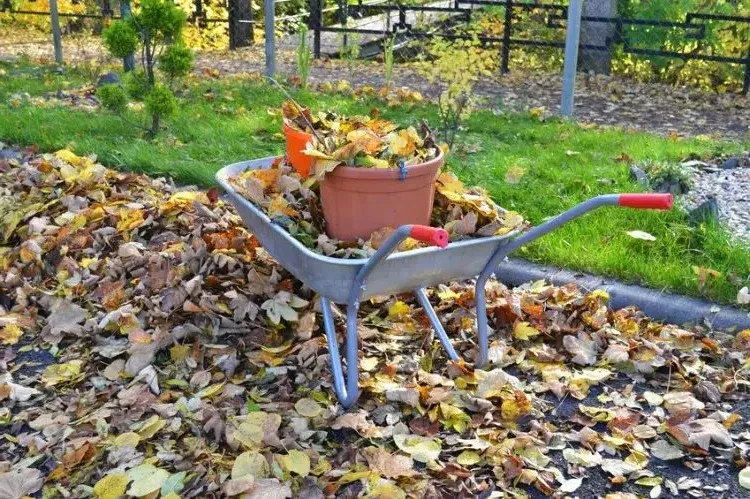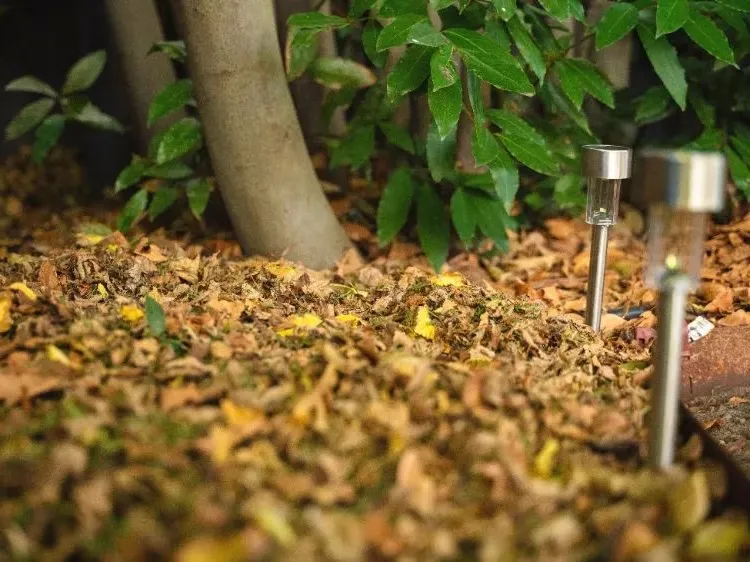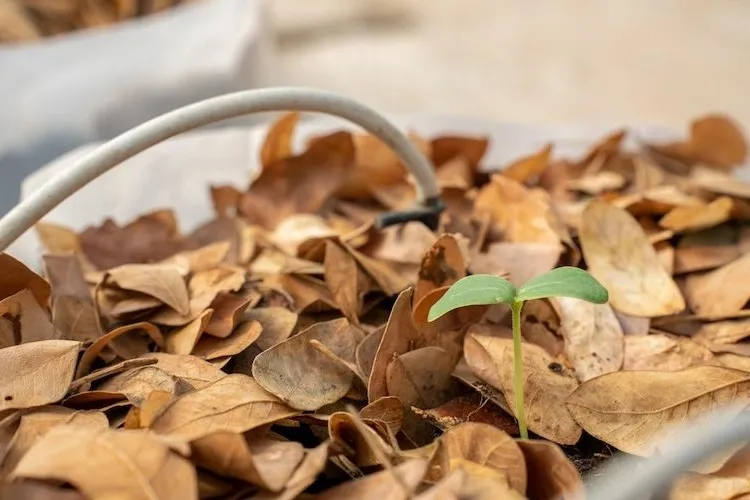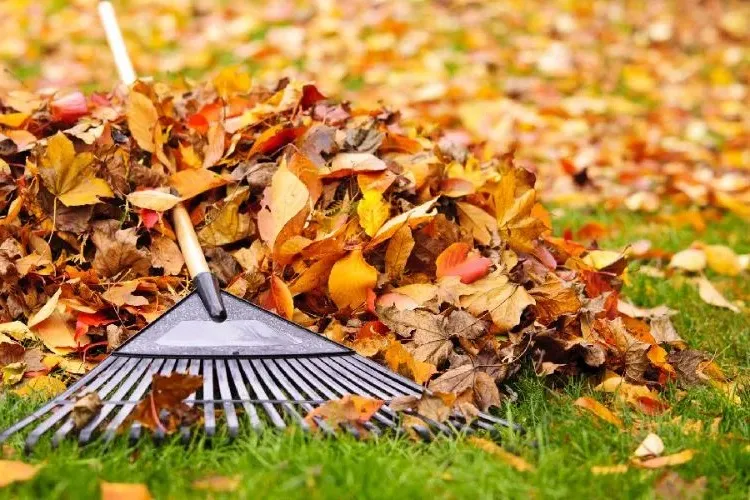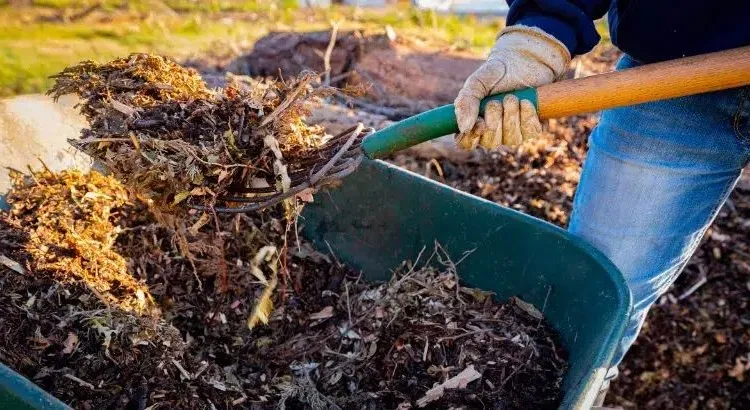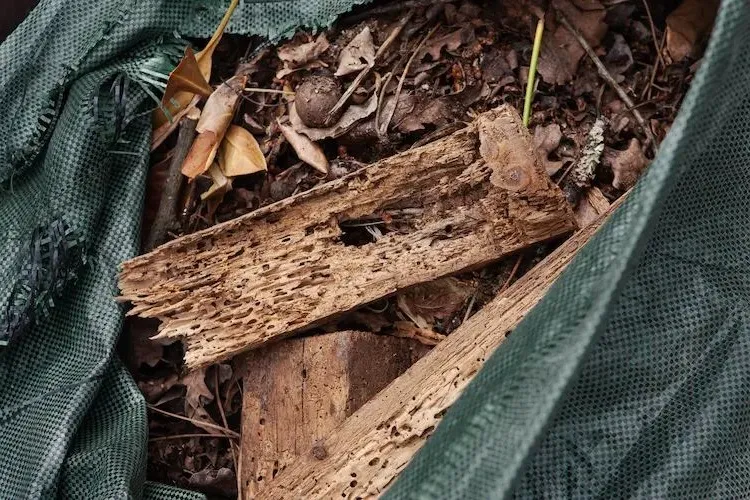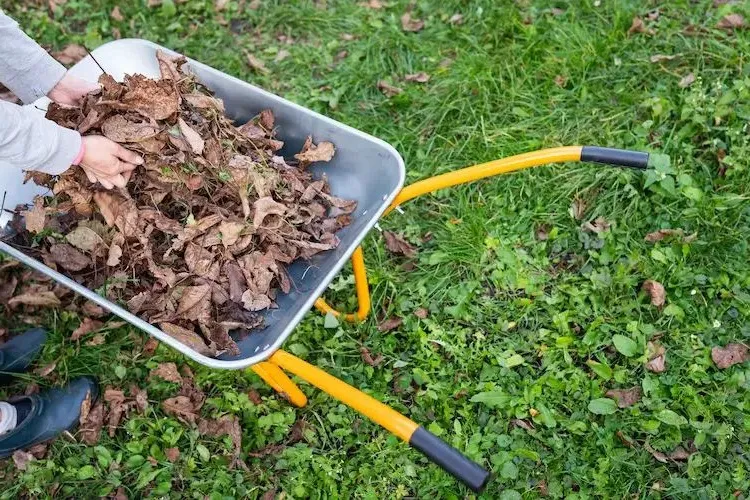Can you use leaves as fertilizer or compost in the garden in a sustainable and environmentally friendly way in the fall? Find out below what options are there!
In late fall, most deciduous trees and plants have already shed their leaves and covered your garden. Disposing of them is a hassle for many people. But what if they could be used to make compost and fertilize garden plants instead? Would it also make sense to leave fall leaves at the base of the trees? Which of them are not suitable for such use in the garden? If you are looking for answers to these questions, here is some useful information and tips for using fall leaves.
Are Leaves As Fertilizer a Good Option & Why Should You Use Them in the Garden?
Instead of letting the dense layer of fall leaves turn into a mushy mess this time of year, you can deal with it practically. When used correctly, foliage as fertilizer can actually provide a natural source of nutrients for garden soil. After falling to the ground, fall leaves decompose and provide organic material that can nourish the soil and plants without the addition of fertilizers.
Furthermore, the fall leaf litter can be used as an advantageous cover at the base of garden plants. Thanks to the decomposition process, you can get a natural remedy as a result, making the garden soil richer in nutrients and more suitable for cultivation.
Are Leaves Also Suitable for Mulching?
Another benefit of this approach can be using fall leaves for mulching. Fallen fall leaves therefore offer an environmentally friendly and, above all, free opportunity to combat weeds and soil compaction in dry weather. The growth of weeds can be effectively suppressed while you prevent the garden soil from sinking.
- To do this, you need to spread a layer of dead leaves about 20 to 30 cm/7.87 to 11.81 in thick at the base of the bushes. This allows you to protect the plant roots and ventilate their stems.
- If you would like to use a suitable device or garden tool, leaf blowers, rakes and leaf shredders are perfect for this. However, the decision is up to you depending on how large the amount of leaves is.
- If you also have a lawn mower with a mulching function, you can easily use it to shred fall leaves on the lawn and use them to feed living organisms in the soil. This naturally creates mulch, which contributes to fertile garden soil and healthy lawns.
Also read: 7 Fall Lawn Care Mistakes and How to Avoid Them
How to Make Compost by Using Fall Leaves As Fertilizer?
In addition to numerous nutrients, fallen leaves provide plants with oxygen and carbon, acting as a fertilizer. In this way, they also concentrate vital minerals in the garden soil. Use the following method to make compost for your plants:
- When composting with fall leaves, stick to the required balance of 1/3 leaves and 2/3 organic waste.
- When yard waste is burned or composted through municipal waste treatment systems, CO₂ is released back into the atmosphere very quickly.
- By supplying your garden compost heap with leaves and garden waste, the decomposition process goes much better. In practice, this means that you are accumulating an ever-increasing supply of CO₂ in the garden in the form of twigs, dead branches and leaves, which you leave to decompose.
- First, simply place a layer of chopped leaves about 20 cm/7.87 in thick on the ground.
- Then add a 20 cm thick green cutting and then another 20 cm thick layer of leaves.
- Try to turn the compost pile regularly to maintain moderate humidity and aerate it.
- In this sustainable and environmentally friendly way, you can use leaves as fertilizer after a year and improve your garden soil.
Which Leaves Should You Not Use in the Garden?
To prevent any risks to your garden plants, you should use fall leaves correctly as compost. For this purpose, you need to avoid some types of leaves. These include the leaves from maple, eucalyptus, walnut, oleander or ivy. Most of them also contain substances that slow down the breakdown of certain components in the compost heap. The leaves of these plant species also contain toxins that can cause damage when fertilized.
For example, if you also want to add oak leaves to your compost, you should pay attention to the quantity. These affect the acidity of the soil and increase its pH value. In addition, walnut leaves contain juglone, which makes them unsuitable for mulching. There is also a lot of lignin in them, which slows down decomposition. Although, such foliage also requires a lot of nitrogen in the soil as fertilizer. One option is to use it as mulch at the base of strawberries, raspberries or fruit bushes. This allows you to make the soil richer in nutrients for such crops.
Also read: Gardening in November: 7 Important Tasks to Do in Late Fall

